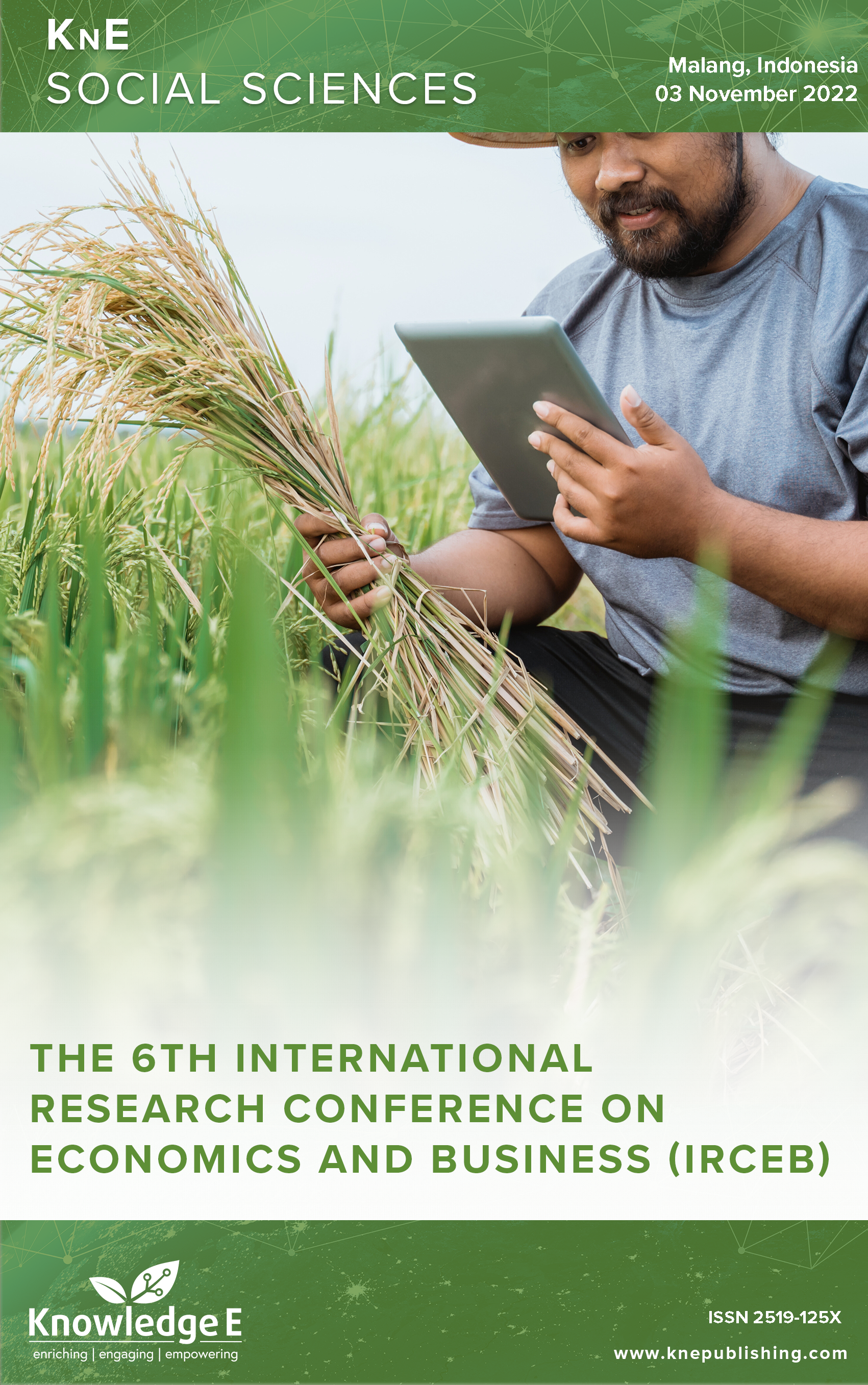Optimization of Rice Distribution Network Based on Green Logistics Concept
DOI:
https://doi.org/10.18502/kss.v9i4.15120Abstract
SDGs or Sustainable Development Goals have become a global and national commitment. Greenhouse gases (GHG) are indicators of climate change which is one of the 17 SDG’s goals. In the national food logistics system with rice as a staple food, there are some regions with surplus production and other deficits. Hence, the distribution involved the transportation activities that need to be carried out. In transportation, the carbon footprints are generated from exhaust gases as residue from the fuel combustion process. The carbon footprint efficiency is one of the indicators in green logistics. Green logistics for decarbonization in the transportation sector for a better environment has to start massively. Indonesia is committed to implementing the green logistics concept in logistics distribution. In this case, the author determined the surplus area and the deficit one based on statistical data on the production and consumption of each city in Java. Furthermore, a distribution network model is designed that involves emission level as a parameter in determining the route on the network. In the design, the selected mode of freight transportation was limited to land transportation modes besides trains. The design makes environmental aspects a major consideration in the distribution as well as the shipping costs.
Keywords: carbon footprint, emission factor, green logistics
References
Badan Ketahanan Pangan Kementerian Pertanian/Sekretariat Dewan Ketahanan Pangan. Kebijakan Strategis Ketahanan Pangan dan Gizi 2020-2024, 2019.
Trust C. Carbon footprinting: An introduction for organizations. London: The Carbon Trust; 2007.
Chen S, Wu J, Zong Y. Wu, Jianhong., and Zong, Yueqi. The impact of the freight transport modal shift policy on China’s carbon emissions reduction. Sustainability (Basel). 2020;12(2):583. DOI: https://doi.org/10.3390/su12020583
Chopra S, Meindl P. Supply chain management: Strategy, planning, and operation. 6th ed. Pearson Education Inc; 2016.
Dhewantara PW. Analisis Jejak Karbon (Carbon Footprint) Penggunaan Kendaraan Bermotor oleh Siswa SMA (Studi Kasus SMAN 4 Bandung). Master Thesis, Universitas Padjadjaran, Bandung, 2010.
Faisal A. Designing national freight maritime network in Indonesia: A supporting study for maritime highway policy in some future scenarios. Master Thesis, Delft University of Technology, Delft, 2015.
Flores SE, Larsen K. Best practice food distribution systems. New South Wales: Food Chain Intelligence, Victorian Eco-Innovation Lab; 2010.
Zhao JY, Dong Y, Mengyuan, Han, Shuihua. Sustainable supply chain network design with carbon footprint consideration: A case study in China. Math Probl Eng. 2019;:1– 19. DOI: https://doi.org/10.1155/2019/3162471
Kazancoglu Y, Yuksel D, Sezer MD, Mangla SK, Hua L. A green dual – channel closed – loop supply chain network model. J Clean Prod. 2021. DOI: https://doi.org/10.1016/j.jclepro.2021.130062
Kementerian Lingkungan Hidup dan Kehutanan Republik Indonesia. Peraturan Menteri Lingkungan Hidup dan Kehutanan Republik Indonesia Tentang Pedoman Penyelenggaraan dan Pelaporan Inventarisasi Gas Rumah Kaca Nasional, Nomor P.73/MENLHK/SETJEN/KUM.1/12/2017.
Kementerian Perhubungan Republik Indonesia. Peraturan Menteri Perhubungan Republik Indonesia Tentang Penyelenggaraan Angkutan Barang dengan Kendaraan Bermotor di Jalan, Nomor PM 60 Tahun 2019.
Louhenapessy JE, et al. Sagu Harapan dan Tantangan. Jakarta: Bumi Aksara; 2010.
Lwin AM. The design of cement distribution network in Myanmar: A case study of X cement industry. Master Thesis, Sepuluh Nopember Institute of Technology, Surabaya, 2015.
Mckinnon A. Green logistics: The carbon agenda. Logforum. 2010;6(1):1–9.
Mckinnon A, Cullinane S, Browne M, Whiteing A. Green logistics improving the environmental sustainability of logistics. London: Kogan Page; 2010.
MITx MicroMasters program in supply chain management. Key Concepts Document, www.edx.org, MIT CTL, Massachusetts.
Pusat Data dan Teknologi Informasi Energi dan Sumber Daya Mineral. Data Inventory Emisi GRK Sektor Energi. KESDM, Jakarta, 2015.
Rismana A, Budiarto R, Harto AW. Analisis Energi dan Emisi CO2 Rencana Bus Listrik di Yogyakarta Studi Kasus Trans Jogja. Jurnal Otomasi, Kontrol, dan Instrumentasi Institut Teknologi Bandung. 2019;11(1):1-13. DOI: https://doi.org/10.5614/joki.2019.11.1.1
Umitri P. Skenario Penggunaan Mobil Listrik di Kota Yogyakarta. Undergraduate Thesis Physic Engineering UGM, Yogyakarta, 2013.
Suntani NH. Analisis Rantai Pasok (Supply Chain) Beras Di Desa Sidoharjo I Pasar Miring Kecamatan Pagar Merbau Kabupaten Deli Serdang [ JIMTANI]. Jurnal Ilmiah Mahasiswa Pertanian. 2022;2(2):1–12.
Wang F, Lai X, Shi N Lai, Xiaofan, Shi, Ning. A multi-objective optimization for green supply chain network design. Decis Support Syst. 2011;51(2):262–269. DOI: https://doi.org/10.1016/j.dss.2010.11.020
Wright LA, Kemp S, Williams I. Carbon foot printing: Towards a universally accepted definition. Carbon Manag. 2011;2(1):61–72. DOI: https://doi.org/10.4155/cmt.10.39

